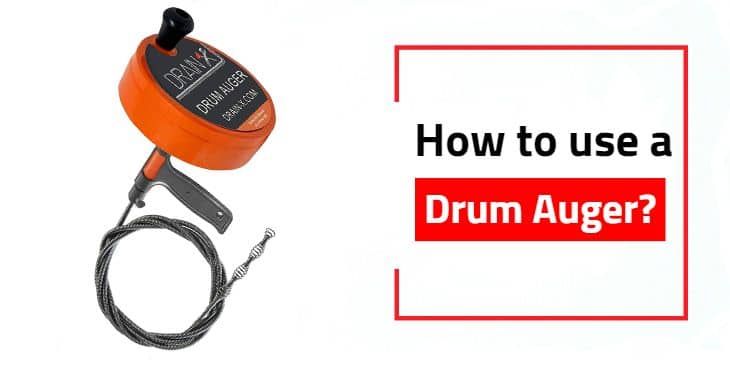It is quite common to get a toilet clog. But sometimes, it can be a clog that won’t quit. You may have tried a plunger or a liquid cleaner to get the clog cleared. In the end, none of them were fruitful.
Don’t worry because you have yet to come across the best tool for this problem; a drum auger. Here we’ll tell you what is and how to use a drum auger on a toilet. Just keep reading, and you will get your answers!
What Is a Drum Auger?
It consists of a cable with a corkscrew at the end. This cable is quite flexible. The flexible cable is coiled inside a drum canister.
It has a thumbscrew on the collar part where the cable comes out, which locksin where the clog is.
Then you turn the corkscrew end into the clog and pull outwards so that you clear the clog. Because of these reasons, it is called a drum auger.
Steps to Use a Drum Auger on a Toilet
Now that you know what a drum auger is, we will move ahead and tell you how to use one.
Before going into the details, keep in mind that you should not directly insert the drum auger to avoid scratching the surface of the toilet bowl. Here are the steps to use this tool:
Step 1: Read the Safety Rules and Prepare Accordingly
At first, you should read the safety rules that come with your drum auger. Then take necessary steps like wearing safety gloves and glasses.
Step 2: Find the Alternate Opening Feed in It
Now you have to find the alternate opening to the toilet, which should be upstream. Then you have to feed the drum auger slowly by turning the drum clockwise to manage the elbows and other obstructions.
Step 3: Pull out to Unclog
While feeding the drum auger, you will recognize the toilet clog when you see that it got stuck in its natural path. Then you lock in the clog.
After that, you pull out the cable all the way to the drum auger. You may have to complete the process several times to unclog the toilet completely. Remember to do the process carefully to avoid damage.
Lastly, remember to wash the toilet and the drum auger after you are done unclogging it. That’s it! You now know how to use a drum auger.
Is a drum auger the same as a snake?
A drum auger and a snake are similar but different tools used for clearing clogs in plumbing pipes. A snake is a general-purpose tool used for clearing clogs in sink and bathtub drains, while a drum auger is a specialized tool designed specifically for clearing clogs in toilets.
Can you use a drum auger on toilet?
Yes, a drum auger, also known as a closet auger, is designed specifically for clearing clogs in toilets. The drum-shaped handle of the auger houses a longer, more durable cable that can be fed into the toilet bowl to reach and remove blockages in the trap or further down the drain line. The longer cable of a drum auger makes it a more effective tool than a standard snake for reaching clogs in toilets.
When using a drum auger, it’s important to follow the manufacturer’s instructions and to use caution to avoid damaging the toilet or pipes. If you’re unsure about using a drum auger or if the clog is severe, it’s best to contact a professional plumber for assistance.
What is the best Drum Auger in market NOW?
The best drum auger in the market depends on a variety of factors, including quality, performance, and price. If we have to choose one from all the available options in market, will highly recommend Ridgid GIDDS-813340. This heavy-duty toilet auger is made with a durable kink-resistant cable and a flexible spring to reach and remove even tough clogs.
Ultimately, the best drum auger for you will depend on your specific needs and budget, so be sure to compare different models and read customer reviews to make an informed decision.
Wrap Up
If you follow our instructions properly on how to use a drum auger on a toilet, you won’t have a hard time unclogging your toilet.
But that is if you only have a drum auger at your disposal. So, if you don’t have one, then we highly recommend getting one and making your life easier than it is now!
However, there are many easy solutions for clogged toilet, you may follow these along with drum auger.

